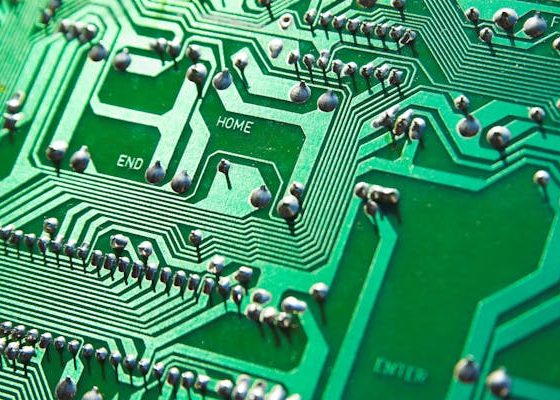
In the digital era, technology has become an integral part of daily life, influencing various sectors, including education. Educational technology for kids, also known as EdTech, encompasses a wide range of digital tools and resources designed to facilitate and enhance learning. From interactive apps to virtual reality experiences, educational technology for kids is revolutionizing the way children learn, making education more engaging, personalized, and accessible. This article delves into the significance, benefits, challenges, and future prospects of educational technology for kids.
The Significance of Educational Technology for Kids
Engaging Learning Experiences
One of the primary benefits of educational technology for kids is the ability to create engaging and interactive learning experiences. Traditional methods of education often rely on passive forms of learning, such as lectures and rote memorization. In contrast, educational technology introduces interactive elements that can make learning more dynamic and enjoyable. For example, educational games and apps use gamification to motivate students and keep them engaged. These tools often include elements like rewards, levels, and challenges that make learning feel like play.
Personalized Learning
Educational technology for kids also enables personalized learning, allowing students to learn at their own pace and according to their individual needs. Adaptive learning platforms use algorithms to assess a student’s performance and adjust the difficulty of tasks accordingly. This ensures that each child receives the right level of challenge and support, helping to prevent both boredom and frustration. Personalized learning paths can be particularly beneficial for children with diverse learning styles and abilities, as they provide tailored content that suits each learner.
Accessibility and Inclusivity
Another significant advantage of educational technology for kids is its potential to make education more accessible and inclusive. Digital tools can break down barriers to learning by providing resources that cater to children with different needs. For instance, text-to-speech and speech-to-text technologies can assist students with visual or auditory impairments. Similarly, educational apps can offer multilingual support, helping non-native speakers to learn more effectively. By leveraging technology, educators can create a more inclusive learning environment that supports all students.
Key Components of Educational Technology for Kids
Interactive Apps and Games
Interactive apps and games are among the most popular forms of educational technology for kids. These tools cover a wide range of subjects, from mathematics and science to language arts and social studies. Apps like Khan Academy Kids and ABCmouse provide comprehensive educational content through engaging activities, videos, and quizzes. These platforms often use colorful graphics, animations, and sounds to capture the attention of young learners and make the educational experience enjoyable.
Virtual and Augmented Reality
Virtual reality (VR) and augmented reality (AR) are emerging technologies that hold great promise in the field of educational technology for kids. VR can transport students to virtual environments where they can explore historical sites, conduct science experiments, or even travel to outer space. AR, on the other hand, overlays digital information in the real world, allowing students to interact with virtual objects within their physical surroundings. Both VR and AR offer immersive learning experiences that can deepen understanding and retention of complex concepts.
Learning Management Systems
Learning Management Systems (LMS) are digital platforms that help educators manage and deliver educational content. These systems provide tools for creating, distributing, and assessing coursework, as well as tracking student progress. LMS platforms like Google Classroom and Schoology are widely used in schools to facilitate online learning and blended learning models. They allow teachers to organize resources, assign tasks, provide feedback, and communicate with students and parents, all in one place.
Educational Robots and Coding Kits
Educational robots and coding kits introduce children to the fundamentals of programming and robotics in a hands-on, interactive way. Products like LEGO Mindstorms and Sphero teach kids how to code by allowing them to build and program robots that can perform various tasks. These tools not only develop coding skills but also foster creativity, problem-solving, and critical thinking. By engaging in activities that require logical reasoning and experimentation, children learn to approach challenges with a systematic and innovative mindset.
Online Tutoring and E-Learning Platforms
Online tutoring and e-learning platforms provide additional support and resources for students outside the traditional classroom setting. Websites like Khan Academy, Coursera, and EdX offer courses and tutorials on a wide range of subjects, often taught by experts and educators from around the world. These platforms allow students to access high-quality educational content at their convenience, enabling them to supplement their learning and explore topics of interest beyond the standard curriculum.
Benefits of Educational Technology for Kids
Enhanced Engagement and Motivation
One of the most significant benefits of educational technology for kids is its ability to enhance engagement and motivation. Interactive and multimedia-rich content can capture students’ attention and make learning more enjoyable. Gamified elements, such as points, badges, and leaderboards, incentivize students to complete tasks and achieve goals. By making learning fun and rewarding, educational technology can encourage a positive attitude toward education and a lifelong love of learning.
Improved Learning Outcomes
Educational technology for kids can lead to improved learning outcomes by providing personalized and adaptive learning experiences. Digital tools can identify a student’s strengths and weaknesses, offering targeted support to address areas of difficulty. This individualized approach helps ensure that each student can master the material at their own pace, leading to better comprehension and retention. Additionally, the immediate feedback provided by many educational apps and platforms allows students to learn from their mistakes and make corrections in real time.
Development of 21st-Century Skills
Incorporating educational technology for kids into the curriculum helps develop essential 21st-century skills, such as digital literacy, critical thinking, collaboration, and problem-solving. By using digital tools and resources, students become proficient in navigating technology and utilizing it for various purposes. Collaborative platforms and online projects foster teamwork and communication skills while coding and robotics activities encourage logical reasoning and creative problem-solving. These skills are crucial for success in the modern world and prepare students for future academic and career opportunities.
Support for Diverse Learning Needs
Educational technology for kids can accommodate diverse learning needs, making education more inclusive and equitable. Digital tools can be customized to provide different levels of support and challenge, ensuring that all students, regardless of their abilities, can succeed. Assistive technologies, such as screen readers, speech recognition software, and adjustable text settings, can help students with disabilities access and engage with educational content. Moreover, online resources and multilingual support can benefit students from diverse linguistic and cultural backgrounds, promoting a more inclusive learning environment.
Challenges and Considerations
Digital Divide
Despite the many benefits of educational technology for kids, some challenges need to be addressed. One of the most significant issues is the digital divide, which refers to the gap between those who have access to digital devices and the internet and those who do not. Socioeconomic disparities can result in unequal access to educational technology, putting disadvantaged students at a disadvantage. To bridge this gap, it is essential to ensure that all students have access to the necessary technology and resources, either through school programs or community initiatives.
Privacy and Security Concerns
The use of educational technology for kids raises important privacy and security concerns. Digital tools often collect and store personal information about students, such as their names, ages, academic performance, and behavior. It is crucial to protect this data from unauthorized access and misuse. Educators, parents, and policymakers must work together to establish robust data privacy and security policies, ensuring that students’ information is safeguarded. Additionally, it is important to educate students about online safety and responsible digital behavior to protect them from potential risks.
Screen Time and Health
Excessive screen time is another concern associated with educational technology for kids. Prolonged use of digital devices can lead to physical health issues, such as eye strain, poor posture, and sleep disturbances. It can also affect mental health, contributing to issues like anxiety and attention problems. To mitigate these risks, it is important to promote a balanced approach to technology use. Educators and parents should encourage regular breaks, physical activity, and offline activities to ensure a healthy balance between screen time and other forms of learning and play.
Teacher Training and Support
The successful integration of educational technology for kids requires adequate training and support for teachers. Educators need to be proficient in using digital tools and understanding how to effectively incorporate them into their teaching practices. Professional development programs and ongoing support are essential to help teachers stay updated with the latest technological advancements and pedagogical strategies. By providing teachers with the necessary skills and resources, schools can ensure that educational technology is used effectively to enhance learning outcomes.
Future Prospects of Educational Technology for Kids
Artificial Intelligence and Machine Learning
Artificial intelligence (AI) and machine learning are poised to play a significant role in the future of educational technology for kids. These technologies can enable more advanced adaptive learning systems that provide highly personalized learning experiences. AI-powered tools can analyze vast amounts of data to identify patterns and make predictions about student performance, helping educators tailor instruction to meet individual needs. Additionally, AI-driven chatbots and virtual tutors can offer real-time support and feedback, enhancing the learning experience.
Expanded Access and Global Learning Communities
As technology continues to evolve, there is potential for educational technology for kids to expand access to quality education on a global scale. Online learning platforms can connect students from different parts of the world, fostering cross-cultural exchange and collaboration. Virtual classrooms and online courses can provide opportunities for students in remote or underserved areas to access high-quality educational content and resources. By leveraging technology, we can work towards a more inclusive and equitable education system that benefits students worldwide.
Integration of Emerging Technologies
The integration of emerging technologies, such as blockchain, the Internet of Things (IoT), and immersive technologies, holds exciting possibilities for the future of educational technology for kids. Blockchain can enhance the security and transparency of educational records and credentials, ensuring the integrity of academic achievements. IoT devices can create smart learning environments that monitor and optimize the learning experience. Immersive technologies, such as mixed reality and holograms, can provide even more engaging and interactive learning experiences. By embracing these innovations, we can continue to transform education and create new learning opportunities.
Conclusion
Educational technology for kids is transforming the landscape of education, offering new ways to engage, personalize, and enhance learning. From interactive apps and virtual reality experiences to adaptive learning platforms and coding kits, digital tools are making education more accessible, inclusive, and effective. While there are challenges to address, such as the digital divide, privacy concerns, and the need for teacher training, the future of educational technology holds great promise. By leveraging the power of technology, we can create a brighter and more equitable future for all students, empowering them with the skills and knowledge they need to succeed in the digital age.

